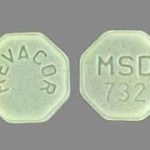
Contents
- 1 Mixed Connective Tissue Disease (MCTD)
- 1.0.1 What are connective tissues?
- 1.0.2 What diseases affect connective tissue?
- 1.0.3 What causes mixed connective tissue disease?
- 1.0.4 What are the symptoms of mixed connective tissue disease?
- 1.0.5 Diagnosis of mixed connective tissue disease
- 1.0.6 Treatments for mixed connective tissue disease
- 1.0.7 Prognosis for mixed connective tissue disease
- 1.0.8 Prevention of mixed connective tissue disease
Mixed Connective Tissue Disease (MCTD)
Mixed connective tissue disease, first described in 1972, is considered an overlap of three diseases: systemic lupus erythematosus, scleroderma, and polymyositis. Patients with this pattern of illness have features of each disease and high quantities of antinuclear antibodies (ANAs) and antibodies to ribonucleoprotein (anti-RNP) in their blood. The symptoms eventually evolve to be dominated by features of one disease, usually scleroderma. Mixed connective tissue disease is often abbreviated as MCTD.
Overlap syndromes can occur involving any combination of connective tissue diseases. For example, patients can have a combination of rheumatoid arthritis and systemic lupus erythematosus (rhupus).
What are connective tissues?
Connective tissues hold the cells of our body together and form a framework or matrix. They are composed of two major structural molecules: collagen and elastin. Collagen proteins vary in amount in each tissue. Elastin has the capability of stretching and returning to its original length. Elastin is the major component of ligaments.
- Connective tissue diseases feature abnormalities involving collagen and elastin.
- These diseases are often characterized by immune abnormalities unique to each type.
What diseases affect connective tissue?
Inheritable diseases of connective tissue include Marfan syndrome and Ehlers-Danlos syndrome. Pseudoxanthoma elasticum is an inherited disorder of elastin.
Other connective tissue diseases occur for unknown reasons. They are characterized by overactivity of the immune system, resulting in the production of unusual antibodies.
Immune-related connective tissue diseases include systemic lupus erythematosus, rheumatoid arthritis, scleroderma, polymyositis, and dermatomyositis. Each disease has a characteristic presentation with typical clinical findings, blood test abnormalities, and abnormal antibody patterns. The conditions may not have developed the classic features, leading to the term "undifferentiated connective tissue disease." Individuals with undifferentiated connective tissue disease may eventually develop a classic connective tissue disease or may never develop a fully definable condition.
What causes mixed connective tissue disease?
The most significant causes and risk factors for developing mixed connective tissue disease are certain inherited gene patterns. There is no known environmental toxin that causes the disease.
What are the symptoms of mixed connective tissue disease?
The signs and symptoms vary greatly among affected individuals.
- Muscle weakness is prominent if polymyositis is dominant.
- Chest pain with breathing, kidney disease, and/or arthritis of the joints may occur if systemic lupus erythematosus prevails.
- Dominant scleroderma symptoms include diffuse swelling and thickening of the fingers and feet with bluish discoloration after cold exposure (Raynaud’s phenomenon).
Diagnosis of mixed connective tissue disease
True mixed connective tissue disease is diagnosed when patients demonstrate the clinical features of overlap illnesses and have high amounts of the antibodies ANA and anti-RNP in their blood. Mixed connective tissue disease patients do not typically have antibodies such as dsDNA and Scl70, which are particularly common in systemic lupus erythematosus and scleroderma respectively.
Doctors who treat patients with mixed connective tissue disease include primary-care providers such as general practitioners, internists, and family medicine doctors. Other specialists who can be involved in the care of these patients include neurologists, cardiologists, pulmonologists, and nephrologists. Rheumatologists have a particular interest in mixed connective tissue disease.
Treatments for mixed connective tissue disease
Treatment is based on which features are causing symptoms and signs. The prognosis varies accordingly. Therapies are targeted for each affected organ system.
Treatment often involves suppressing inflammation with anti-inflammatory and immunosuppressive medications such as NSAIDs, cortisone drugs/steroids, antimalarial drugs, and cytotoxic drugs. Additional treatments may be required for organ damage.
Joint and Muscle Pains
Treatment options for joint and muscle pains include NSAIDs, low-dose prednisone, hydroxychloroquine, and methotrexate. TNF blockers may be considered for inflammatory arthritis.
Pulmonary Hypertension
Pulmonary hypertension is treated with medications that open the arteries to the lungs, blood-thinning drugs, and supplemental oxygen.
Interstitial Lung Disease
Prednisone and cyclophosphamide are considered for interstitial lung disease.
- Angiotensin-converting enzyme inhibitors are used to prevent kidney damage if blood pressure is elevated.
- Esophagus irritation and heartburn can be prevented by elevating the head of the bed and relieved with stomach acid-blocking medications and antacids.
- Constipation, cramping, and diarrhea caused by bacteria can be treated with tetracycline or erythromycin.
Raynaud’s Phenomenon
For Raynaud’s phenomenon, patients are recommended to use hand- and body-warming techniques while protecting the fingers from injury. Medications such as nifedipine, losartan, and nitroglycerin cream are used to dilate the constricted blood vessels. In severe cases, nerve surgery called "sympathectomy" may be considered to prevent blood vessel constriction.
Gastroesophageal reflux disease in mixed connective tissue disease can be helped by elevation of the head of the bed and taking stomach acid-blocking medications. Raynaud’s phenomenon can be helped by general body warming and wearing gloves to prevent chilling.
Prognosis for mixed connective tissue disease
The outlook depends on the location and intensity of the affected organs. Early treatment and monitoring tend to lead to better outcomes.
Prevention of mixed connective tissue disease
No prevention exists for mixed connective tissue disease.
Firestein, Gary S., et al. Kelley’s Textbook of Rheumatology, 9th Edition. Philadelphia, PA: Saunders, 2013.


